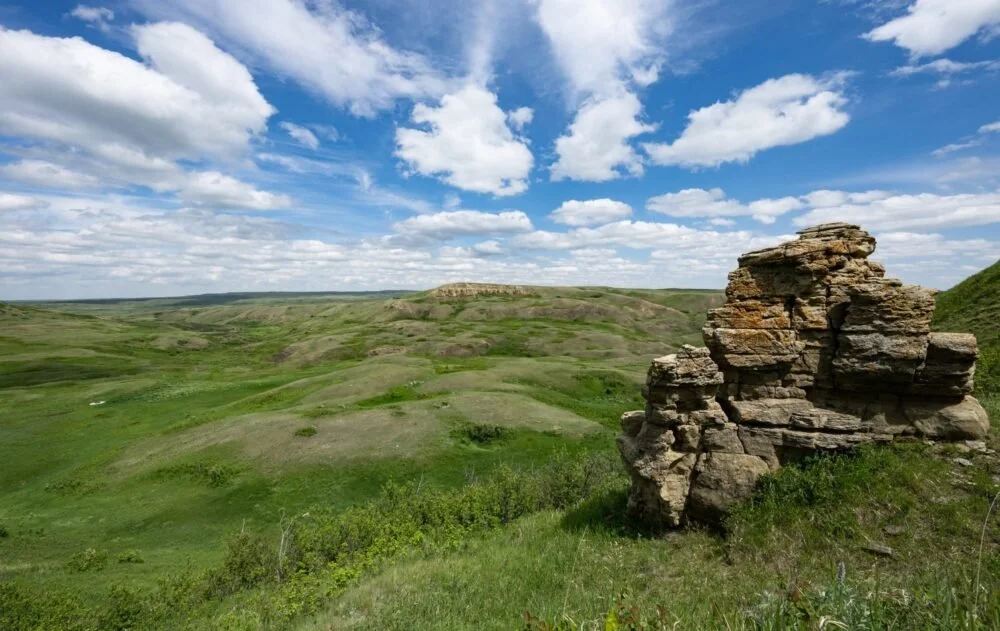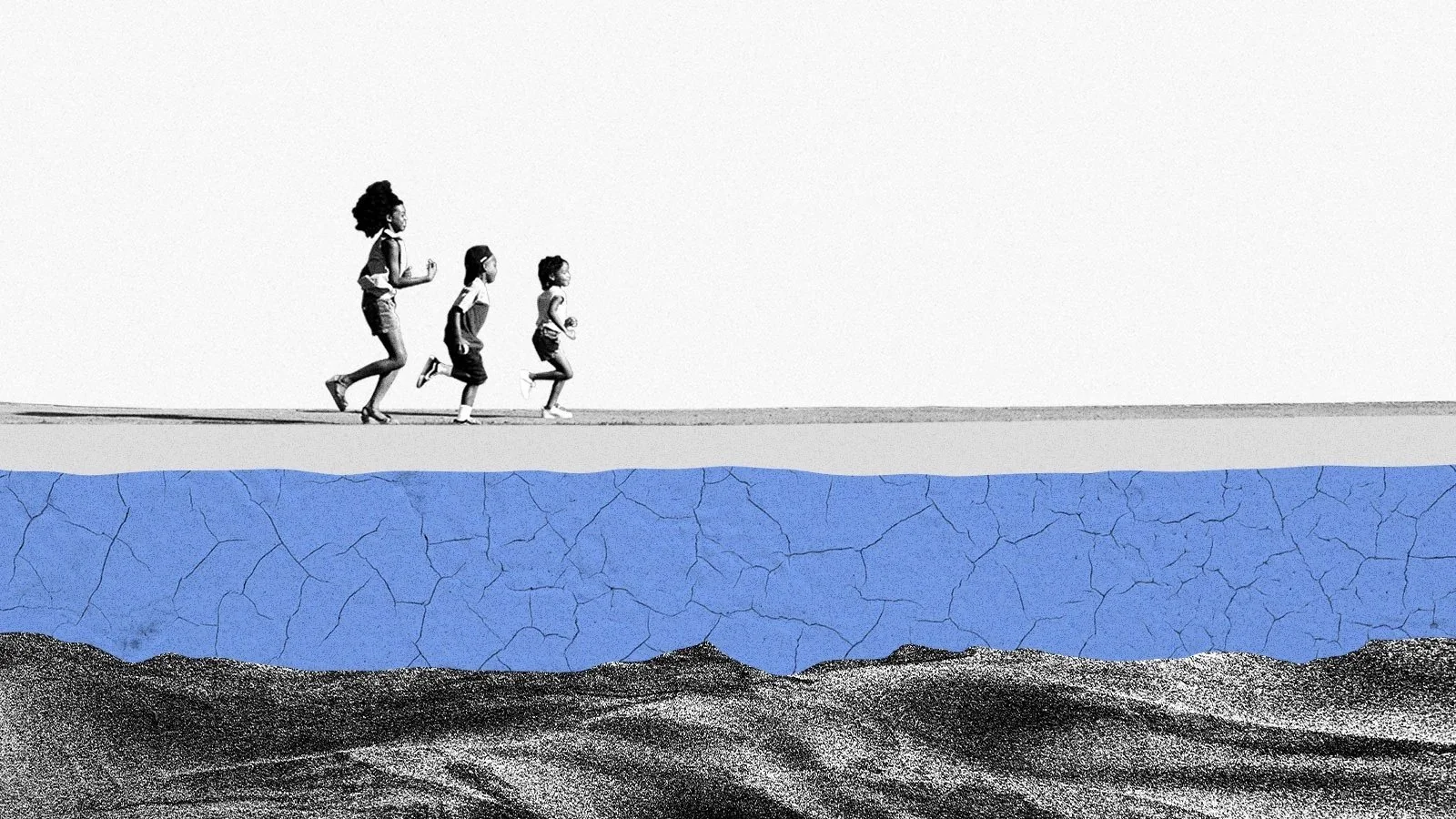The Ontario government is investing up to $6.9 million in approximately 100 local conservation projects to restore and enhance wetlands across the province. This funding will help 14 conservation partners restore more than 2,400 acres of wetlands in Ontario, which combined is larger than Presqu’ile Provincial Park, near Brighton. The projects will improve water quality, help prevent flooding and build climate change resiliency.
Conservation leaders join forces on largest private grassland project in Canadian history
The Nature Conservancy of Canada (NCC) and Ducks Unlimited Canada (DUC) are working together to conserve one of the largest remaining tracts of intact Prairie grasslands and wetlands in Canada. McIntyre Ranch, located south of Lethbridge, will be conserved through an agreement (conservation easement) between the landowners and the two organizations. This 130-year-old ranch is one of the largest private landholdings in Canada, and spans over 22,000 hectares — an area more than a quarter the size of Calgary.
Saskatchewan landowners say illegal drainage is washing out land, roads downstream
Brent Fry, who farms grain and livestock, said it's common for his land to flood for three days when people upstream get 50 millimetres of rain. He said it has caused roads and access points to erode. "There are about four farms out there and all they're doing is draining whether they've got permission or not," Fry said. "I don't even know what to do because the government's not doing anything — they're siding with the big guys."
Supreme Court limits EPA power to police water pollution Published
The US Supreme Court curtailed the federal government's authority to protect its wetlands from pollution in a decision on Thursday. The court voted only those wetlands with a continuous surface connection to larger streams, lakes and rivers would come under federal protections. The Environmental Protection Agency (EPA) expressed its disappointment. It is the second case in two years where the court limited the EPA's ability to regulate pollution.
Coastal GasLink hit with more stop work orders over water pollution concerns
Coastal GasLink has been issued stop work orders on a stretch of pipeline construction for the second time in just over a week, the latest in a pattern of environmental violations for polluting sensitive waterways. The pipeline project crosses about 625 lakes, rivers, creeks, wetlands, and streams in northern B.C. On Tuesday, the BC Environmental Assessment Office Compliance and Enforcement Branch said it had issued four stop work orders to Coastal GasLink late last week because erosion and sediment were negatively impacting the upper Anzac River watershed, about 130 kilometres northeast of Prince George.
Protecting Saskatchewan’s waterways and wetlands
Saskatchewan is known for its many beautiful lakes and abundance of fresh water and wetlands. Helping to protect the province’s natural resource of water is the Saskatchewan Association of Watersheds. The association’s executive director, Bridget Andrews, explains the work they do and how the public can help protect Saskatchewan’s waterways.
Beavers could help replace artificial dams being decommissioned on Vancouver Island
Members of a Canadian conservation organization are working on a project to increase biodiversity and healthy wetlands in British Columbia with the help of beavers. Ducks Unlimited Canada is mapping areas in the province where beavers can replace artificial dams once they've been decommissioned. "Beavers are a keystone species," said Jen Rogers, a master's student at Simon Fraser University working with Ducks Unlimited Canada. "They're considered ecosystem engineers."
Water matters here
I discovered one obvious reality when I moved to Manitoba in 2001: water is a big, big issue here. And it’s often news. Farm news. Agriculture news. Winnipeg news. Indigenous news. Environmental news. Sometimes it even gets to be national news. Whether it’s floods, droughts, water pollution, drainage, wetlands, sewage plant costs or Canada-U.S. river crossings, water issues are often the most important in the province.
It’s not just oceans rising. It’s groundwater, too
Beneath our feet there is an invisible ocean. Within the cracks of rock slabs, sand and soil, this water sinks, swells and flows — sometimes just a few feet under the surface, sometimes 30,000 feet below. This system of groundwater provides a vital supply for drinking and irrigation, and feeds into rivers, lakes, and wetlands. Across the globe, it contains 100 times as much fresh water than all the world’s rivers and lakes combined.
How beavers are reviving wetlands
We are losing wetlands three times faster than forests, according to the Ramsar Convention on Wetlands. When it comes to restoring them to their natural state there is one hero with remarkable powers - the beaver. Wetlands store water, act as a carbon sink, and are a source of food. The Ramsar Convention on Wetlands says they do more for humanity than all other terrestrial ecosystems - and yet they are disappearing at an alarming rate. The main problems are agricultural and urban expansion, as well as droughts and higher temperatures brought about by climate change. But if you have a river and a beaver it may be possible to halt this process.
Nature Conservancy of Canada purchases land for protection in southern Alberta
The announcement comes a few months after the organization announced a $6.9-million campaign to save a 16.5-square-kilometre property called the Yarrow, which is also in southern Alberta but "a little farther north" from the latest project and just outside what's traditionally known as the Waterton Park Front. The Yarrow also features grasslands, wetlands, creeks, mixed forests and includes 27 wildlife species of provincial and national significance. There are two streams that provide fish habitat and transport water from Alberta's southern headwaters to rivers across the Prairies that flow to Lake Winnipeg and eventually Hudson Bay.
Moths are the new tool to protect Canada’s wetlands
Phragmites, Phragmites australis, also known as European common reed, is an invasive perennial grass that spreads quickly and out-competes native species for water, sunlight and nutrients. It releases toxins from its roots into the soil to further hinder the growth of and kill surrounding plants, leading to a decrease in biodiversity and habitat. There is no single method that is a ‘quick fix’ to manage phragmites. Instead, a continuous, multi-method approach is required for success and long-term results. Current removal methods include herbicides, prescribed fire, cutting underwater, flooding and physical removal.
Kootenay Connect to receive extended funding for conservation programs
“This is a critical time for conservation work locally, and also globally. Kootenay Connect is moving our region toward doing our part to protect 30 per cent of Canada’s land and water by 2030, the recently agreed upon global conservation goal to minimize our planet’s ongoing biodiversity loss,” said Dr. Michael Proctor, Kootenay Connect Science Advisor. “We look forward to a network of healthy interconnected ecosystems that support a rich array of wildlife and important ecosystem services.”
Ducks Unlimited Canada celebrates Manitoba Government's newly designated Provincially Significant Peatlands
Ducks Unlimited Canada (DUC) applauds the Manitoba Government's decision in designating Moswa Meadows and Fish Lake Fen as Provincially Significant Peatlands—the first of their kind in the province. Manitoba is home to 17 per cent of Canadian peatlands, with these ecologically valuable areas covering over one third of the province's landmass. Peatlands offer valuable environmental and social benefits, including water management and filtration, remarkable carbon storage capacity, and habitat for wildlife.
Ducks Unlimited Canada adds more than 80 hectares of protected wetlands in the Outaouais
Ducks Unlimited Canada (DUC) is proud to announce that it has recently acquired six properties, totaling more than 80 hectares of wetlands in the regional county municipality of Pontiac. Located in the municipalities of Isle-aux-Allumettes and Île-du-Grand-Calumet in the Outaouais region, the various properties have great ecological value, particularly because of their strategic location on the periphery of the Ottawa River, a high-priority area for the conservation of waterfowl and their habitats.
World-first satellite to measure Earth’s water levels blasts into space
A UK-backed mission involving the University of Bristol, which will observe huge swathes of ocean and surface water in unprecedented detail, has launched into space. The international Surface Water and Ocean Topography (SWOT) satellite took off from Vandenberg in California on 16 December. SWOT will use a revolutionary radar instrument, named KaRIn, to survey at least 90% of the Earth’s surface, measuring and monitoring changes in the ocean, lakes, reservoirs, rivers and wetlands, to produce data that will help improve our understanding of climate change, as well as predict and mitigate flood risks around the world.
Quebec town illegally rezoned farmland, clear cut wetlands, commission finds
Three years after a flood engulfed Beauceville, the Quebec town could face legal sanctions after razing wetlands without a permit, a Quebec municipal commission report has found. From March to May, clear cutting was carried out over several hectares on behalf of the town of about 6,500 on lots the Environment Ministry had not approved, the commission says.
Province Announces New Protected Areas, Funding to Protect More Land
The Province is investing an additional $20 million to help protect more of Nova Scotia’s land and water and designating another 9,300 hectares of Crown land for the benefit of Nova Scotians and the environment. Environment and Climate Change Minister Timothy Halman made the announcements today, December 12, in Middle Sackville near the newly designated Sackville River Wilderness Area. It covers about 800 hectares of mature forests, wetlands, lakes and waterways. This protected area will help conserve the Sackville River, the Pockwock watershed, which provides communities with drinking water, and recreation areas.
Ducks Unlimited optimistic for return of water to Miner's Marsh in Kentville
In late October the largest pond at Miner's Marsh, along the Cornwallis River, was mostly dry after a year of dropping water levels, with the bottom sunbaked. While dozens of ducks and geese would normally have spent time there in the fall on their way south for the winter, only a handful of birds were walking through the water, most of it too shallow for swimming. The summertime population of ducks also seemed lower.
The Ford government is trying to sell off Ontario’s natural heritage
Bill 23 would strip conversation authorities of their ability to adequately protect from flooding and keep drinking water free from pollution by managing the watershed including wetlands and woodlands. These reforms could also force conservation authorities to sell off conservation areas to developers and speculators by requiring them to identify “surplus” lands to sell for housing.





















